The Weekly Mash, Friday 24th October
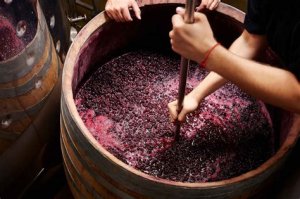
TURNING WINE INTO WHISKY
We all approach whisky in a different way. Our background and experiences feed into how we assess what is in the glass. My friend and mentor Michael Jackson came to whisky through beer. That was his frame of reference. I came from wine. We’d look for the same qualities: balance, complexity, and character, but the routes to our conclusions were different.
We were writers, but what if you are a distiller and come to whisky from a different discipline? How might your training, mindset or palate influence not only the way in which taste whisky, but make it?
I began thinking of this when I was in the Pacific North West, visiting American single malt distilleries. All of the distillers I met had started in brewing and their talk was about speciality malts, beer yeasts, mashing, and ferment. It was an approach that translated to their drams which had a roasted richness, balanced maltiness, a drier undertow balancing heightened aromatics. The roots were clear.

The week before, I’d visited the St.George distillery in Alameda. The chat was long, fascinating, extensive. The whiskies had silkiness and length ‘Almost vinous,’ I’d written. ‘Fruits balanced by acidity’. At one point we’d begun chatting about wine and it transpired that head distiller Dave Smith had previously worked with his brother at his family winery Blacksmith Cellars. Could his wine background have influenced his approach to whisky?
The more I looked into the backgrounds of distillers who had come from a wine background the more I began to see a similarity in textural quality and an attention to palate length. They felt different.
Was I simply projecting the idea of a winemaker’s palate onto whiskies, or was there something in it.? The only way to find out was risk ridicule and ask some of them.
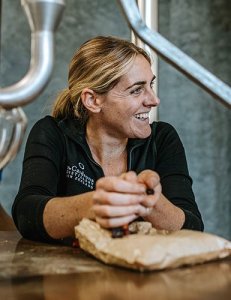
Thankfully, there was complete agreement. All of them speaking of a focus on structure, body, texture, and length. Even then, I wasn’t sure. Don’t all distillers and blenders do this? It wasn’t just the adherence to these (shared) fundamentals, but the way in which they approached them.
For Dave Smith, the lessons from wine are all encompassing. ‘I see winemaking and distilling as entangled fields,’ he adds. ‘We have that same need to capture our point of view and share it in a bottle. The great noses in wine have the ability to read nuances as a statement of the terroir,’ he says.
‘A winery’s practices and where the wine is in its life cycle. That last part is how I’d define a winemaker’s palate in the whisky context, people that possess a deeper understanding of the potential life of a whisky.’
Maybe it’s muscle memory. ‘I’d suggest that the style of wine that a winemaker surrounds themself with has shaped their palate,’ says Sarah Elsom, former winemaker and now master distiller at New Zealand’s Cardrona. ‘I grew up with Marlborough Sauvignon Blanc and then chased new world Pinot Noir. I absolutely search for acidity, structure and appreciate elegance and finesse over robust and chewy profiles. This is ingrained in me.’
She was joined in this by Heather Tillott who joined Tasmania’s Sullivan’s Cove, where she is now distillery manager, in 2015 after making wine at the island’s Two Figs. ‘The field we’re in shapes the nuances of our palate,’ she says. ‘Winemakers, brewers, cider-makers, sake brewers. We all look at our crafts from a slightly different angle, but, we all use our palates to do the looking and obsessing, seeking balance and harmony between all elements.’
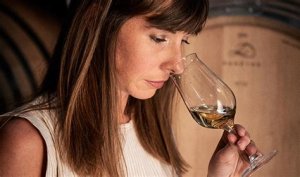
Is this palate-drive approach the defining difference? ’Palate analysis is approached differently in distilling,’ says Magali Picard at France’s Maison Lineti where winemaking techniques such as lees aging are being trialed. ‘It is there where coherence, integration, and ageing potential reveal themselves.
‘The way that a winemaker tastes is distinct to that of a distiller,’ she adds. ‘A distiller often focuses more on the immediate aromatics, particularly on the nose, looking for specific markers linked to distillation, raw materials, and the early stages of maturation.
‘In wine, palate analysis is as important as the nose: retro-olfaction, an awareness of attack, mid-palate, and finish. You analyse the balance between sweetness, bitterness, warmth, roundness, and tautness.’
If all of that is ingrained, is there any surprise that the feel of a winemaker’s whisky is different?
Picard’s mention of ‘tautness’ intrigues me. Acidity is rarely spoken about in whisky (the exception being Japan – which makes me wonder if that’s a sake influence) yet it exists. It provides a spine for the other flavours to play around. It gives freshness, completes balance, adds lift. If you don’t have it in your whisky, the result is flaccid, overloaded, unsubtle. Not thinking, or being aware, of acidity results in a boring whisky.
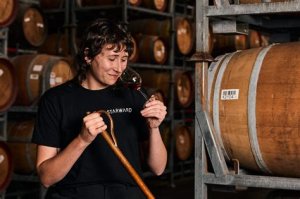
If, and I know this is a gross simplification, brewer-distillers focus more on the front of the process, then do winemaker-distillers looking at the end? Not just palate length, but maturation and blending and how those elements create a compete picture.
There was a telling comment from Carlie Dyer, Starward’s head distiller and blender (and former lab manager at deBortoli in the Yarra Valley) as we discussed how she assessed body, mouthfeel, acidity and length. She went on to speak of how the approach extended into casks. ’In wine oak is used to soften tannin and add subtle complexity. In whisky it’s often a dominant character. You can’t hide behind a charred cask with wine.’
It’s a point echoed by Patrick Newton, distiller at New Zealand’s Waiheke Whisky. He is also winemaker for the island’s Mudbrick vineyard. ‘I want clean characters coming through in the wash,’ he says. ‘I don’t want to manipulate flavours with yeast. The simpler I can make that process the more true I’m being true to where that grain came from.
’Mouthfeel, length and balance are drilled into us as winemakers. When it comes to cask selection I’m always thinking of what will complement the whisky, not overpower it and finding ways to layer sweetness, tannin, or savouriness to complement the spirit.’
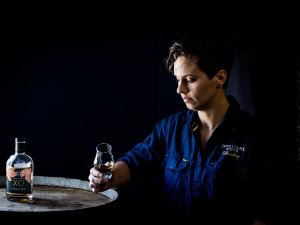
Is was when the discussions moved to maturation and blending that the overall idea of a winemaker’s palate came more sharply into focus. All emphasised how their experience of working with oak in winemaking drove their approach to whisky maturation: be it oak type, toasting levels, or élevage.
This light touch is diametrically opposed to the approach driven by the belief that “80% of a whisky’s flavour is from the cask”. In Heather Tillott’s words, it is about ‘finding the yin-yang balance between the strength and gentleness of oak.
The focussed disciplines of blending and careful use of oak within winemaking are highly valuable,’ she adds. ‘A winemaker’s palate can deftly decipher the mysteries going on inside a barrel with a remarkably intuitive sniff and a sip!’
How each of them use casks is, however, different. At Sullivan’s Cove, where long-term ageing is key, Australian Tawny and ex-Bourbon casks, plus refill, are used. At Maison Lineti, Magali Picard, who also heads research for the Demptos cooperage, uses toast profiles inspired by winemaking, ‘to modulate the release of aromatic and phenolic compounds,’ adding ‘I often incorporate a short period in new oak at the start of maturation [a wine and Cognac technique] to bring a subtle tannic framework that prepares the whisky for long-term ageing.
‘The first year is decisive sensorially and chemically as it’s here when the most intense extraction occurs,’ she says. ‘The structure takes shape, and oxidation, esterification, tannin integration begin to define the final profile. At this stage, every choice matters: type of oak, toasting level, and time in new wood or not.’
What then of wine casks? Sarah Elsom is upping ex-Pinot Noir casks from nearby Otago wineries to further define the Cardrona character, while at Starward, Carlie Dyer uses red wine barrels extensively. ‘A Bourbon barrel is made for one use,’ she says. ‘It has a dominating and often one-dimensional flavour profile. I love wine barrels for their structural integrity and complexity, dependent on cooperage, species, seasoning and toasting times.’
While Patrick Newton uses refill ex-Bourbon for his peated whiskies, he’s also exploring the possibilities of wine casks. ‘It costs more to ship casks from Auckland to Waiheke than it does to ship from America to Auckland,’ he says, ‘so we have to think outside the box.’
He takes freshly emptied casks from Mudbrick and fills them immediately with new make. Having wine lees still in the cask is giving him another element in building texture and complexity.
However he doesn’t use his red wine casks, feeling that they don’t complement peat. ‘Waiheke reds are Bordeaux varietals and Syrah – big, bold, tannic. Pinot can work – just look at what Sarah is doing – but also she’s not working with peat.’
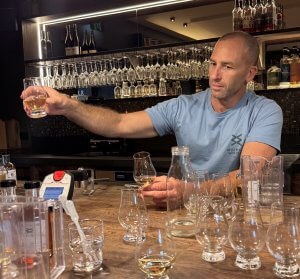
Underpinning all of this is a heightened blending mindset. At St.George, a portion of each batch is returned to cask. These can then be drawn from to add texture, aromatics, to new expressions. ‘The reason to blend one barrel with another is to make one plus one equal three,’ say Dave Smith. ‘That’s true for wine and whiskey. A winemaker can’t explore time in the same way that a whiskey blender can. A blender can marry the lighter grain-forward aromatics of youth with the rich palate of one that’s been concentrating through evaporation for years, or decades.’
The winemaker approach isn’t a better way of making whisky to that of a former brewer or a trained distiller and blender. What is does is give a different lens through which to examine whisky.
‘I like that whisky-makers from different professional backgrounds have their own lexicon,’ says Sarah Elsom. ‘Ex-brewers playing in the tun room and ex-winemakers playing in the maturation space has added value and interest to whisky.’
A version of this appeared as one of my regular columns at jancisrobinson.com
——————————
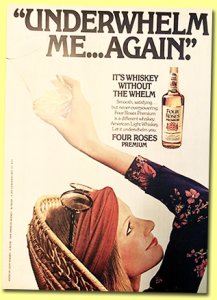
INTO THE LIGHT
I mentioned the American light whiskeys of the 70s the other week when looking at Chivas’ new exploration into that area. I’ve since been rummaging about in the histories of whiskey and this popped up. It’s either the most honest piece of advertising ever or evidence that maybe Four Roses knew from the start that light whiskey was doomed.
———————————
IN MY GLASS
All of these were found at the recent Whisky Show, one from the Arctic, one from the west coast of Denmark, and a Scottish blend.
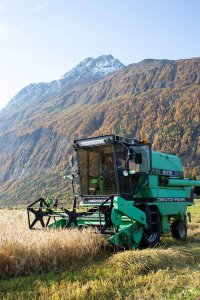
Bivrost Arctic Barley [cask sample] was a hit of the show. Not released as yet, but a work in progress that I first wrote about here in 2022. Made in the most northerly distillery in the world, from locally grown Braga barley, and fermented with a Kveik yeast, it mixes nutty/bready notes with sweet, lively and concentrated fruits – even some tinned pineapple. Everything here confounds expectation.
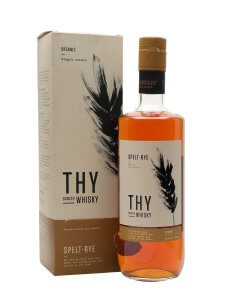 Thy Spelt-Rye (48.5%/£59.95) comes from the farm distillery on the west coast of Denmark. All the grains are organic and malted (there’s also a little barley malt) and it’s been aged in new American oak. The cask gives a deep colour but doesn’t overpower what is a sweet spirit with a whisper of dry grassiness and herbs, and some floral elements on the nose. There’s a slow release on the slightly oily palate which adds in ginger, cardamom, and a little caramel.
Thy Spelt-Rye (48.5%/£59.95) comes from the farm distillery on the west coast of Denmark. All the grains are organic and malted (there’s also a little barley malt) and it’s been aged in new American oak. The cask gives a deep colour but doesn’t overpower what is a sweet spirit with a whisper of dry grassiness and herbs, and some floral elements on the nose. There’s a slow release on the slightly oily palate which adds in ginger, cardamom, and a little caramel.
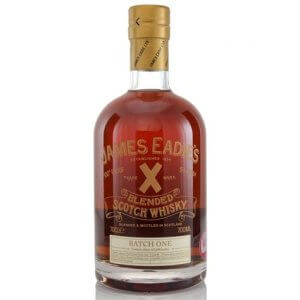 James Eadie Trade Mark X, 100 Proof (57.1%/£39) There’s a wee story behind this. When Rupert Patrick revived his great-great-grandfather’s blend, the recipe used came from Eadie’s own blending books. At its launch, a bottle of the original blend was opened for comparison. To everyone’s surprise, it was the complete opposite of what the books suggested. The new Brand X was elegant, fruity, lightly smoky – the old was deep, sherried, rich.
James Eadie Trade Mark X, 100 Proof (57.1%/£39) There’s a wee story behind this. When Rupert Patrick revived his great-great-grandfather’s blend, the recipe used came from Eadie’s own blending books. At its launch, a bottle of the original blend was opened for comparison. To everyone’s surprise, it was the complete opposite of what the books suggested. The new Brand X was elegant, fruity, lightly smoky – the old was deep, sherried, rich.
This new 100 Proof follows the latter template. There’s fig jam, raisin, dark chocolate, gingerbread, smoke and charred red pepper on the nose. The palate is sweetly thick with the beeswax polish, almond and Dundee cake. The finish has black cherry jam and smoke. The strength doesn’t get in the way. A must-try.
————————————
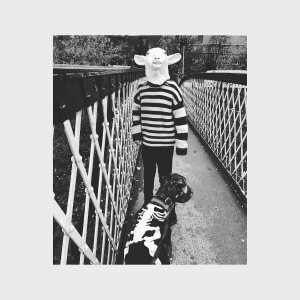
In my ears
I went to see the incredible Kathryn Joseph and my old mucker Lomond ‘Ziggy’ Campbell this week. It was a seance of synths and dark, blood- and flame-filled imagery. There is beauty in what seems to be bleakness.